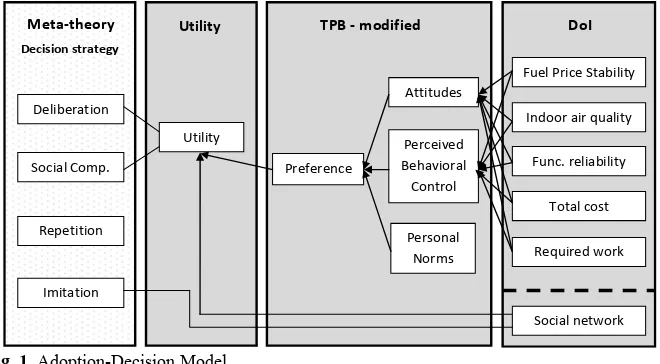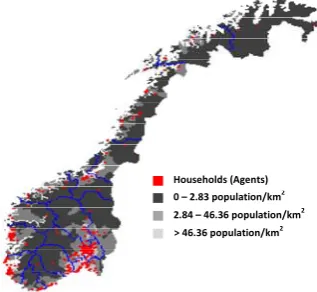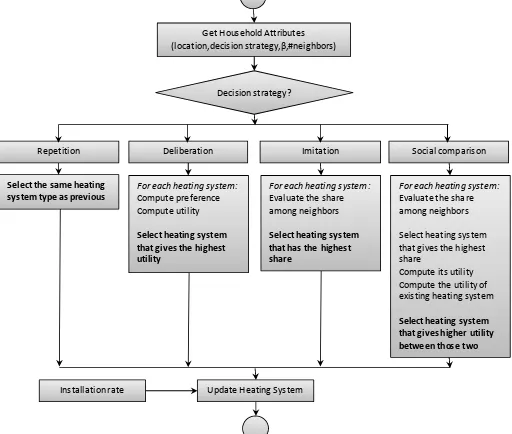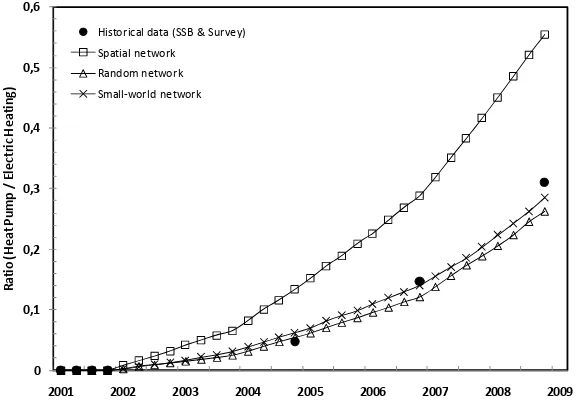Organisation
Chair
Andreas Ernst, CESR, University of Kassel, Germany
Local Organisation Committee
Nadine Chrubasik, CESR, University of Kassel, Germany
Silke Kuhn, CESR, University of Kassel, Germany
Programme Committee Co-chairs
Claudio Cioffi Revilla, George Mason University, Fairfax, Virginia, USA
Rosaria Conte, Institute of Cognitive Sciences and Technologies, Rome, Italy
Takao Terano, Tokyo Institute of Technology, Japan
Europe (ESSA)
Iqbal Adjali, Unilever Corporate Research, UK
Frederik Amblard, CNRS-IRIT, Toulouse University of Social Sciences, France
Luis Antunes, University of Lisbon, Portugal
Edmund Chattoe-Brown, University of Leicester, UK
Helder Coelho, University of Lisbon, Portugal
Carmen Costea, Academy of Economic Studies Bucharest, Romania
Alessio Sebastiano Delre, University of Groningen, The Netherlands
Bruce Edmonds, Manchester Metropolitan University Business School, UK
Tatjana Filatova, University of Twente, The Netherlands
Armando Geller, George Mason University, Fairfax, Virginia, USA
Nigel Gilbert, University of Surrey, Guildford, UK
Luis Izquierdo, University of Burgos, Spain
Wander Jager, University of Groningen, The Netherlands
Jean-Daniel Kant, UPMR, France
Ruth Meyer, Manchester Metropolitan University Business School, UK
Scott Moss, Scott Moss Associates, Manchester, UK
Mario Paolucci, Institute of Cognitive Science and Technologies, Rome, Italy
Gary Polhill, The Macaulay Institute, Aberdeen, Scotland, UK
Frank Schweitzer, Swiss Federal Institute of Technology, Zurich, Switzerland
Alex Smajgl, Commonwealth Scientific and Industrial Research Organisation, Australia
Flaminio Squazzoni, University of Brescia, Italy
Klaus G. Troitzsch, University of Koblenz-Landau, Germany
Kees Zoethout, University of Groningen, The Netherlands
North America (CSSS)
Timothy Gulden, University of Maryland, USA
Marco Janssen, Arizona State University, USA
Michael North, Argonne National Laboratory, USA
Jonathan Ozik, Argonne National Laboratory, USA
Dwight Read, University of California at Los Angeles, USA
Nils Weidmann, Princeton University, USA
Asia and Pacific (PAAA)
Eizo Akiyama, Tsukuba University, Japan
Shu-Heng Chen, National Chengchi University, Taiwan
Fumihiko Hashimoto, Osaka City University, Japan
Kiyoshi Izumi, Tokyo University, Japan
Toshiyuki Kaneda, Nagoya Institute of Technology, Japan
Toshiji Kawagoe, Future University-Hakodate, Japan
Hajime Kita, Kyoto University, Japan
Isamu Okada, Soka University, Japan
Tamotsu Onozaki, Aomori Public College, Japan
Aki-Hiro Sato, Kyoto University, Japan
Keiji Suzuki, Future University-Hakodate, Japan
Shingo Takahashi, Waseda University, Japan
SES-09_I
G
ROUPD
ECISIONS ANDC
OLLECTIVEB
EHAVIOURII
CHAIR
Armando Geller
1
Modelling academic research funding as a resource allocation problem
; Jason
Noble (University of Southampton)
2
Analysis of Knowledge Retrieval Heuristics Considering Member's Load
Balancing
; Yusuke Goto (Iwate Prefectural University)
3
When does a newcomer contribute to a better performance?
; Kees Zoethout
(University of Groningen)
SES-09_II
E
CONOMY ANDM
ARKETD
YNAMICSII
CHAIR
Robert Tobias
1
Multi-Agent-Simulation of Prediction Markets: Does Manipulation Matter using
Zero-Intelligence Traders?
; Frank Klingert (Hamburg University of Technology)
2
Measuring the Impact of Workforce Sickness on Economic Output Controlling
for Technology and Epidemiology
; Maciej Latek (George Mason University)
3
Analyzing the influence of fundamental indexation on financial markets through
agent-based modeling
; Hiroshi Takahashi (Keio University)
SES-09_III
S
OCIALN
ORMS&
I
NFORMATIOND
YNAMICSI
CHAIR
Alex Smajgl
1
Evolution of Conditionally Risk Behaviour
; Isamu Okada (Soka University)
2
Social Norms in two-sided Principal-Agent Relations
; Michael A. Zaggl (Hamburg
University of Technology)
3
Vulnerability and Evolution of Cooperation in the Metanorms Game
; Hitoshi
Yamamoto (Rissho University)
SES-10_I
I
NNOVATIOND
IFFUSION ANDN
ETWORKD
YNAMICSII
CHAIR
Louise Carley Young
1
The Influence of the Social Network Structure on the Diffusion of Heating
System in Norway
; Bertha Maya Sopha (Norwegian University of Science and
Technology)
2
Scenario Analysis for New-product Development in Market with Lead Users’
Innovations
; Kotaro Ohori (Waseda University)
The Influence of the Social Network Structure on the
Diffusion of Heating System in Norway
Bertha Maya Sopha1*, Christian A. Klöckner2, Edgar G. Hertwich1
1 Industrial Ecology Programme and Department of Energy and Process Engineering
2 Department of Psychology, Section for Risk Psychology, Environment and Safety
Norwegian University of Science and Technology (NTNU) NO-7491 Trondheim, Norway
*corresponding author: [email protected]
Abstract. An agent-based simulation was developed as a tool for exploring the effect of government interventions on the adoption of a heating system. This paper describes the conceptual framework of adoption-decision making based on models from different theories; meta-theory (social psychology/consumer behavior), utility theory (behavioral economics), Theory of Planned Behavior (psychology), and Diffusion of Innovation (technology management). A mail survey of 270 Norwegian households in 2008 was designed specifically for acquiring data to feed the simulation. Simulation result of the influence of the social network structure on diffusion rate is presented. The result suggested that the small-world network is the most representative network structure, in comparison to spatial proximity and random network, within the context of household’s heating system adoption and diffusion.
Keywords: Agent-based simulation, heating system, diffusion, Norway, social network structure.
1 Introduction
wide-spread utilization. The focus of this paper is specifically to study the influence of the social network structure on the diffusion rate and to select the most representative structure for the later phase of this simulation study. Conceptual design and data acquisition method are discussed briefly.
Previous studies of heating system adoption have investigated socio-demographic factors, communication, and decision strategies that determine adoption [3-5]. One common limitation of these works is the lack of realistic representation of spatial location, actor heterogeneity, and interaction. Moreover, the dominating use of statistical tools such as discrete choice models for modeling consumer choice, based on a static description of the decision making, is unable to represent the dynamicity of a system affected by social change, external pressures or micro-level drivers. In contrast to that, agent-based modeling (ABM) introduces the concept of agents represented as autonomous and interacting [6]. Studies of complex systems have demonstrated that unexpected results, so-called emergent phenomena, may result from simple rules performed by different autonomous actors in the system. The approach is able to represent the heterogeneity of households, to symbolize agents in particular location in landscape, and to explicitly model the interactions among agents. Moreover, ABM allows using different information sources, such as sample surveys, experts’ opinion, and reports, to be incorporated into the model.
2 Conceptual Model and Data Acquisition
The process by which a new technology is adopted and diffused can be studied from a number of perspectives. Four different perspectives, i.e. meta-theory [7], utility theory [8], Theory of Planned Behavior (TPB) [9] and Diffusion of Innovation (DoI) [10], were taken into account in developing the adoption-decision model to be implemented in the agent-based simulation presented in this paper.
Households employ different decision-making strategies depending on external and internal conditions. Individuals do not always make consistently rational decisions. They rather use a wide range of rules or heuristics to reduce the effort of cognitive processing. The meta-theoretical approach, an integrative framework of consumer behavior [7], is applied to represent which decision strategy is performed by each household. Four different decision strategies are outlined in this theory (1) Repetition which represents habitual decision-making, (2) Deliberation which evaluates all the available alternatives, (3) Imitation which assumes the social network as the only influence, and (4) Social comparison which selects the most advantageous heating system out of the previously used and the system most adopted by neighbors. Furthermore, utility theory, TPB, and DoI are used as a blueprint to present the mechanisms involved in the different decision strategies. Each decision strategy follows its own line of decision processing as shown in Fig.1. For instance, Repetition copies the previous decision. Deliberation and Social Comparison follow the utility calculation to combine preference and social influence, while Imitation considers only social influence when making decision.
While the DoI theory conceives of innovation attributes as components of attitude formation, TPB assumes that not only attitudes but also normative beliefs and perceived behavioral control (PBC) are predictors of intention, which will then predict adoption [9]. The perception of heating system attributes are used as explanatory variables for attitudes, as they turn out to be part of the belief system, and perceived behavioral control, as they might increase or hamper the perceived ability of adoption. Five specific heating system attributes adopted from Mahapatra and Gustavsson [3] were applied (see Fig. 1). Personal Norms, articulated as the household’s moral responsibility to use an environmentally friendly heating system, are represented as addition to the TPB structure. Utility theory [8] is used to frame decision elements rooted from both household’s preference and social influence as, according to DoI, decisions are not only related to individual needs but also social requirements [10].
A comparable model has been employed in simulating the diffusion of water-saving technology in German households [11]. In contrast to the German study, it explicitly modeled that households held different decision strategies and the personal norms were included as a predictor of preference.
Fig. 1. Adoption-Decision Model
Using the model above, an empirical survey was conducted in 2008 to collect individual household data such as location, number of peers to whom a household communicates about heating technology, the employed decision strategy, and the degree of social influence on decisions. Psychological data for different heating systems (preference/intention, attitudes, PBC, personal norms, and perceived heating system attributes) were collected to derive parameter weights of components in the adoption-decision model (see Fig. 1) as well as to set initial values of user-settable parameters, i.e. perceived attributes of heating systems and personal norms. In addition, the frequency of and motivations for heating system replacement were gathered. One thousand five hundreds questionnaires were sent to Norwegian homeowners, due to the self-determining authority in making decision about heating system, drawn as a random sample from the population register. After three weeks, the response rate was 10.3% (154 questionnaires). Additional responses of 137
Fuel Price Stability
questionnaires were received after a reminder sent three weeks later, resulting in a response rate of 19.4% (291 responses). Due to missing values, the final analysis was based on a sample of 270 households. The response sample was representative for Norwegian households with respect to age and geographical distribution.
3 Agent-Based Model
The model is applied to cover the country of Norway which has a total size of 385 252 km2 with approximately 4.8 million people living in the region. The populated areas are mostly located along the south and west coast of Norway (see Fig.2).
3.1 Household agents
An agent is a decision making entity in the agent-based model. An agent within this model represents one specific household drawn from the empirical survey. Each household agent is characterized by a number of individual parameters, i.e. geographical location, employed decision strategy (based on meta-theory), degree of social influence when making decision (0-100%), number of peers/neighbors to whom households communicate about a heating system, and the currently adopted heating system.
Fig. 2. Household agents
3.2 Heating systems
Three types of heating systems are examined: direct electric heating (the standard technology in Norway), the individual wood pellet stove, and air-to-air heat pumps (hereafter referred to as heat pump). The households decide on one of the heating system options which compete with each other1. Each heating system is characterized
1 Most of Norwegian households utilize more than one type heating system, this study however
only models the main heating system
2.84 – 46.36 population/km2
0 – 2.83 population/km2
> 46.36 population/km2
by a specific evaluation based on multiple attributes such as perceived fuel price stability, indoor air quality, functional reliability, total cost, and upkeep work. A series of regressions were performed for each type of heating system under study to estimate the weight of different components in the adoption-decision model.
3.3 Decision-making process
A trigger for installation decision in this model is represented by a replacement time, which is not necessarily corresponding to a heating system’s lifetime, representing that households would change their heating system after a certain time period. An average replacement time of 20 years corresponding to the replacement time before electricity crisis in 2003 was obtained from the survey, and thus used as initial value. The replacement time however needs to be adjusted with the presence of external events, such as extremely high electricity price that was evidently leading to shorter replacement time [12]. As one time step was defined to represent a quarter of a year (3 months), an “installation rate” was introduced to establish a meaningful representation of time. This allows that all household agents decide simultaneously in each time step but the decision choice of each household will only convert to installation to a certain fraction which is the installation rate. For instance, the replacement time of 20 years corresponds to an installation rate of 1.25% per quarter.
Fig. 3. Decision process algorithm
Depending on the selected decision strategy, one of four algorithms (see Fig.3) is employed to decide upon the heating systems. Nonetheless, the decision strategy is not the same over time as households are exposed to different situations over time even though decisions made for the heating systems are infrequent. Instead of
Get Household Attributes (location,decision strategy,β,#neighbors)
Decision strategy?
Social comparison Imitation
Deliberation Repetition
Installation rate Update Heating System
Select the same heating system type as previous
For each heating system:
Compute preference Compute utility
Select heating system that gives the highest utility
For each heating system:
Evaluate the share
among neighbors
Select heating system that has the highest share
For each heating system:
Evaluate the share
among neighbors Select heating system
that gives the highest
share Compute its utility Compute the utility of
existing heating system
assigning households to the same decision strategy over time, the households select their decision strategy in each time step with the probabilities derived from empirical survey2.
3.4 Social network
Households depending on their decision strategy are interacting with each other when making a decision, connected through their social network. The interaction thus has an influence to the decision that depends on the households’ neighbors/peers, the stated degree of social influence, employed decision strategy, location, and social network structure. From the literatures, there are different approaches to model a social network in an agent-based simulation. One type of network structures is based on spatial proximity, such as in a Moore network [13] and Von Neumann network [14]. Another network known as random network, in which each household communicates with other households randomly, was first introduced by Erdős and Rényi [15]. Since real networks are unlikely to be purely random, Watts and Strogatz [16] have introduced regular network ‘rewiring’, a so-called small-world network. With respect to the small-world network, the model sets a rule that each household interacts with its neighbors based on spatial proximity, neighbors within its ‘radius’, and random interactions to other actors outside the radius to enable the social network in the model to have the attributes of a small-world effect. The number of household’s neighbors was determined by the survey. The algorithm difference among those three approaches is presented in Fig. 4. The scale-free network is not investigated in this study [17].
Fig. 4. Different social network structures with 4 neighbors
4 Simulation
The model was implemented in the Repast Java platform (http://repast.sourceforge.net/). The simulation starts in 2001 with a single heating system, electric heating, in all households. Multiple runs (replications) of identical
2 This simulation work offers the preliminary model, not suggested as the final one. The drivers
initial conditions are necessary to determine if the conclusion from a simulation run is representative. Thirty replications were carried out, which is within the range of most researchers performed [18]. All parameter values were derived from the survey, no estimation or guess was made. However, replacement time was adjusted (from 2003) due to high electricity price and subsidy introduction, based on the data from Bjørnstad [12] and Norsk Varmepumpeforening [19]. As independent historical data of adopted heating systems in Norway are available for the years 2001, 2004, and 2006 [2], in addition to the survey data in 2008, the simulation therefore covers the time period of 2001-2008.
0
2001 2002 2003 2004 2005 2006 2007 2008 2009
Rat
Small‐world network
Fig. 5. Ratio of adopted heat pump and electric heating for different structure of social network in comparison to historical data
Fig.5. shows that different structures of social network, as expected, result in different diffusion patterns. Different studies on modeling the DoI in social network summarized by Garcia [18] and the study of Schwartz and Ernst [11] identified that network structure significantly impacted the diffusion rate of innovations. Moreover, it is found that the small-world structure gives the best fit with historical data, while spatial proximity performs worst. The random network shows only a slightly different adoption compared to the world network. The result suggests that the small-world network structure offers the best representation of the household social network structure within the context of heating system adoption and diffusion. The small-world network was also found in the network structures of the collaboration graph of actors in feature films, the electrical power grid of the western United States, and the neural network of the nematode worm C.elegans [16].
5 Conclusion
This paper has introduced a theoretical-based, empirical-founded, agent-based model for simulating the diffusion of heating system to study the influence of social network structure on diffusion rate. The model suggests that the small-world network is the best representation of social network structure within this context. Further research in the near future will be conducted to develop scenarios to identify potential interventions to increase the uptake of wood pellet heating.
Acknowledgments. Financial support provided by Norwegian University of Science
and Technology (NTNU), Norway, is gratefully acknowledged.
References
1. Larsen, B. M. and Nesbakken, R.: Formålsfordeling av Husholdningenes
Elektrisitetsforbruk i 1990 og 2001, Økonomiske analysis 4 (2005), in Norwegian
2. Statistics Norway, SSB (2006), http://www.ssb.no/husenergi/tab-2008-04-28-08.html
3. Mahapatra, K., and Gustavsson, L.: An Adopter-Centric Approach to Analyze the Diffusion
Patterns of Innovative Residential Heating Systems in Sweden, Energy Policy 36, 577-590 (2008)
4. Kasanen, P. and Lakshmanan, T. R.: Residential Heating Choices of Finnish Household
Econ. Geogr. 65, 130-145(1989)
5. Sopha, B. M., Klöckner, C. A., Skjevrak, G., and Hertwich, E. G.: Norwegian Households’
Perception of Wood Pellet Stove Compared to Air-to-Air Heat Pump and Electric Heating, Energy Policy 38, 3744-3754 (2010)
6. Gilbert, N., Troitzsch, K. G.: Simulation for the Social Scientist. Open University Press,
Buckingham (1999)
7. Jager, W.: Modeling consumer behavior, Doctoral thesis, Rijksuniversiteit Groningen, the
Netherlands (2000)
8. Tversky, A., Kahneman, D.: The Framing of Decisions and the Psychology of Choice,
Science 211, 453-458 (1981)
9. Ajzen I.: The Theory of Planned Behavior. Organ. Behav. Hum. Dec. 50, 179-211 (1991)
10.Rogers, E. M.: Diffusion of Innovations, 5th ed., New York: Free Press (2003)
11.Schwarz, N., and Ernst, A.: Agent-Based Modeling of The Diffusion of Environmental
Innovations – An empirical Approach, Technol. Forecast. Soc. 76, 497-511 (2009)
12.Bjørnstad, E., Grande, J., Sand, R. and Wendelborg, C.: Evaluering av Tilskuddordninger
til Varmepumper, Pelletskaminer og Styringssystemer, Nord Trøndelags-forskning, in Norwegian (2005)
13.Weisstein, Eric W. "Moore Neighborhood." From MathWorld--A Wolfram Web Resource.
http://mathworld.wolfram.com/MooreNeighborhood.html
14.Weisstein, Eric W. "von Neumann Neighborhood." From MathWorld--A Wolfram Web
Resource. http://mathworld.wolfram.com/vonNeumannNeighborhood.html
15.Erdős, P. & Rényi, A.: On Random Graphs. I. Publ. Math-Debrecen 6, 290–297 (1959)
16.Watts, D. J. and Strogatz, S. H.: Collective dynamics of small-world networks, Nature 393,
409-10 (1998)
17.Albert, R. & Barabási A.-L.: Statistical Mechanics of Complex Network, Rev. Mod. Phys.
74, 47-97 (2002)
18.Garcia, R.: Uses of Agent-based Modeling in Innovation/New Product Development
Research, J. Prod. and Innovat. Manag. 22, 380-398 (2005)




